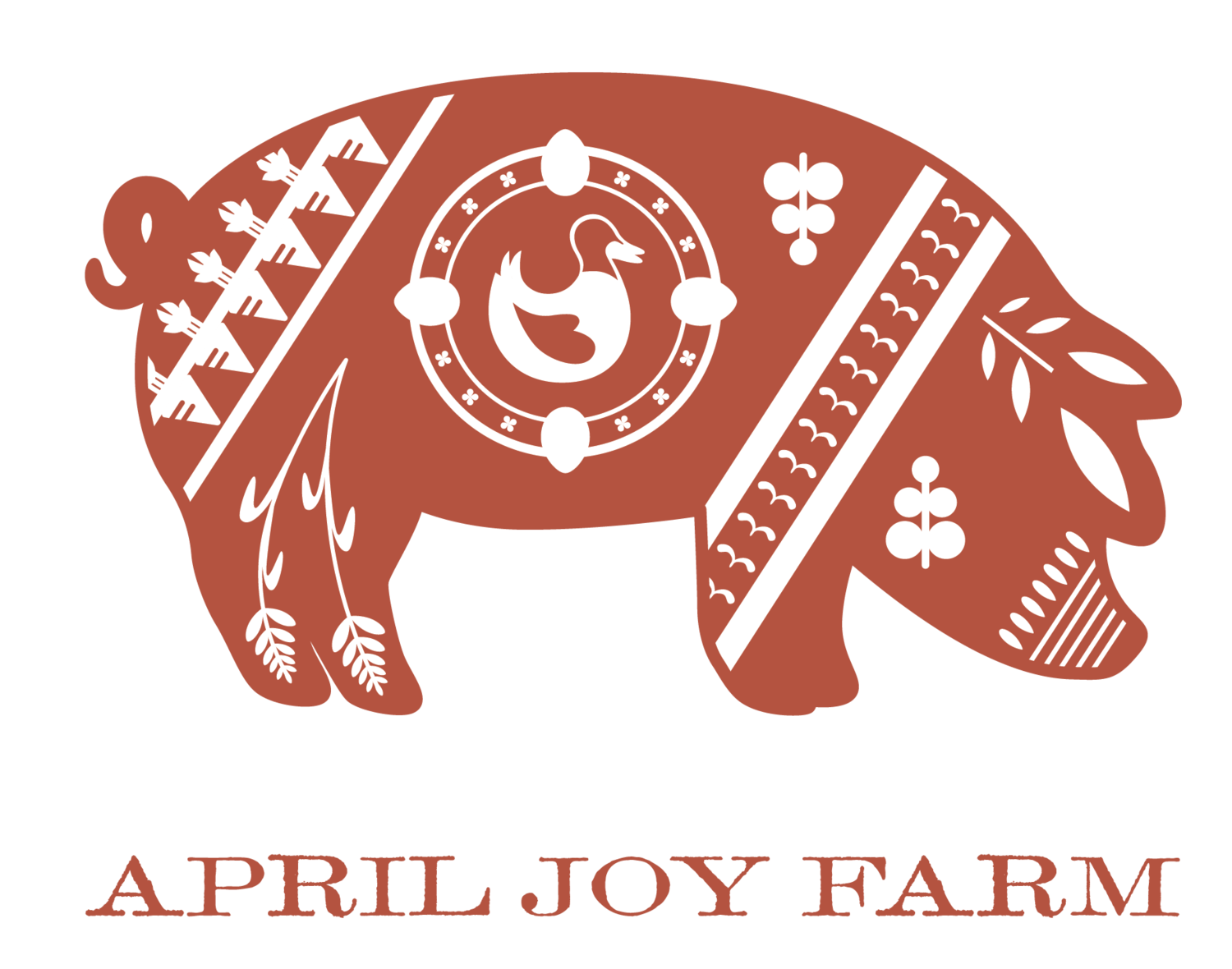Plant by Plant
Sign of the season: This year's potato harvest yielded 2,634 pounds. Thank you Julia, Mae, Pat, Karen, and Kaylene for your harvest help!
It might surprise you to know that April Joy Farm is the first working farm many of our visitors have ever stepped foot on, and Brad and I are the first farmers they’ve ever met. I always relish the opportunity to share what we do, in part because farmers are so often portrayed as ignorant and slow witted, and farming as a career has long been considered at best undesirable and at worst a waste of time for any young person with “potential.” Because it’s quite easy to stereotype agriculture and farmers, I always want my visitors to leave the farm inspired, surprised or at least with a heightened respect for the profession of agriculture and those of us who choose to devote our lives to it.
As new visitors absorb the diversity of our farm landscape, it doesn’t take long for the inherent complexity of this model of food production to sink in. Frequently I’m asked, “How do you figure out when to seed all your crops?”
The short answer is, plant by plant. The long answer is, each winter, Brad and I painstakingly craft a typically 15 page double sided crop schedule. We use a software program designed to plan commercial construction projects. Building a structure and building a crop plan are surprisingly similar. But instead of subcontractor schedules, our schedule lists every crop, every variety of every crop, and every planting, uppotting, transplanting, and harvest date of every variety of every crop. One reason we use specialized software is that it allows us to build in relationships between each task. I can link certain tasks so they will occur in a certain order and be spaced a certain length of time apart.
Planning our crop schedule is actually even a little more complicated. Some of our crops are succession planted, salad lettuce for instance. We can’t just sow lettuces one time, or we wouldn’t be able to provide lettuce all season long to our CSA families. We actually sow lettuces every 2-3 weeks to provide for a near continuous harvest. So for one variety of lettuce, we could have up to ten different sowing dates, plus ten transplanting dates, plus ten harvest dates.
I’ve never written the score to a symphony, but I’d like to think it’s similar. Just like the four seasons on a farm, there are often four parts (movements) to a symphony. And at some point, you must write every note for every instrument while keeping in mind the greater vision. How does each component add distinct value across the landscape and over time? When will each element speed up, slow down, fall silent? When is repetition necessary and how much? Our succession plantings anchor some weeks like the chorus of a song, lending familiarity and structure to a very dynamic system.
Our schedule also includes tasks related to soil management – when are we mowing, discing, tilling or cover cropping? When are we applying amendments? The 2019 schedule includes nearly 1,000 discrete tasks that we need to do over the course of the year to keep our farm operation on track.
Even after a decade of practice, preparing this schedule is mentally challenging work. For instance, when determining sowing dates, we must take into account an incredible number of factors. We think about seed vigor, the effect of different row configurations, weather variability on germination rates, anticipated soil conditions, estimated required yields necessary to meet our CSA commitments, length of harvest windows, as well as labor and infrastructure requirements. Resource leveling is crucial because we don’t hire employees, so we have to review our schedule and make sure the number of tasks per week isn’t impossible to achieve. Likewise, knowing if the crop requires trellising or staking means added materials and labor. Importantly, we also must take into account when we will be able to have a secure market for our crops. (Yes, we can have turnips in August, but it’s unlikely our chefs will want them when tomatoes and cucumbers are available.)
From November to the middle of January, we spend the majority of our work time reviewing the previous year’s data and pulling together our annual schedule. Every instrument in the orchestra requires a different musical score. Likewise, every crop requires its own distinct schedule. And because we frequently have multiple varieties of each crop, we really create our schedule plant by plant.
Our 15 page annual project schedule is actually just one of many of the elements of our annual farming plan. So I bet you can understand why it is a good thing for farmers to have a few quiet months to think through the nuances and complexities of the coming season. I really enjoy the diversity of work and the technical challenges a farming career provides. At some point in my conversations with new farm visitors, it’s inevitable that I tell them, “Contrary to all the stereotypes, farming is the most fascinating, complex career one could possibly imagine.”
It’s true! When I'm not out in the field because of wet conditions and limited daylight, I am probably in the office, rigorously envisioning a whole new season, plant by plant.~AJ
“Abandon the urge to simplify everything, to look for formulas and easy answers, and begin to think multidimensionally, to glory in the mystery and paradoxes of life, not to be dismayed by the multitude of causes and consequences that are inherent in each experience — to appreciate the fact that life is complex.”


